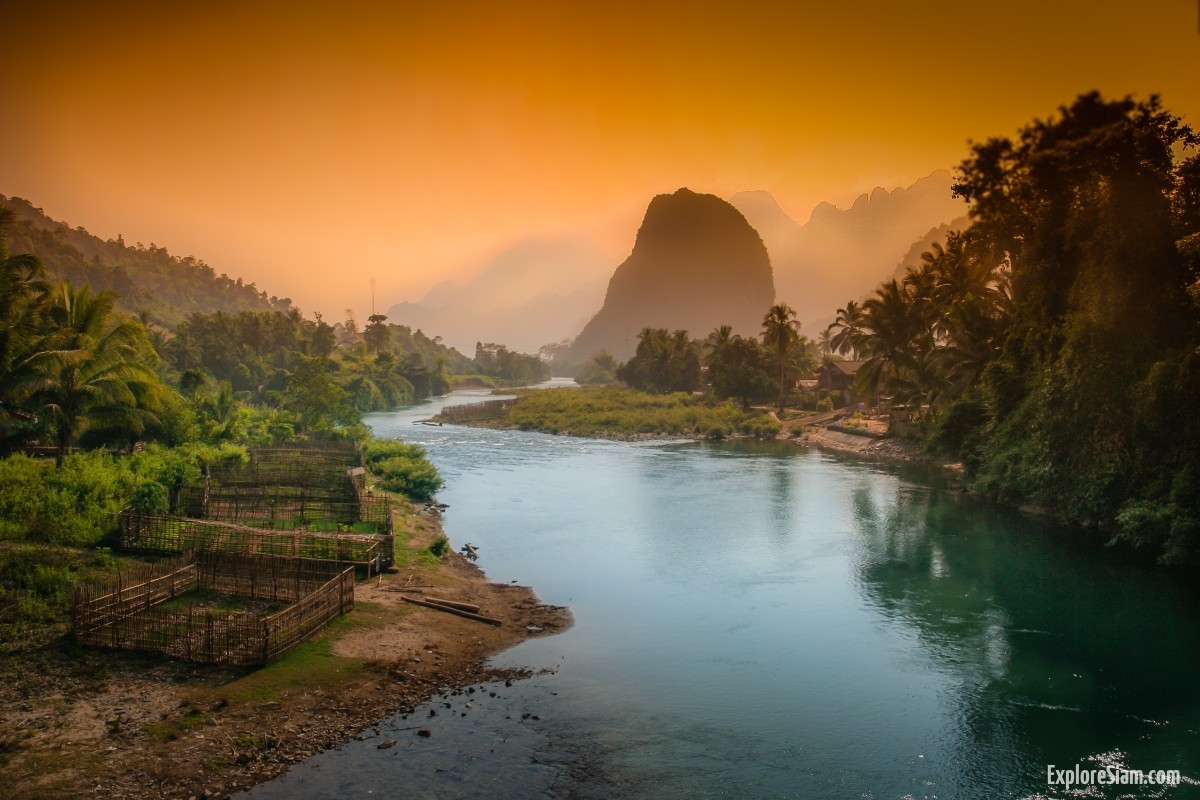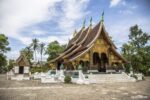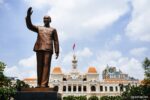Laos, a landlocked country in Southeast Asia, is often overlooked by travelers who flock to its more famous neighbors, Thailand and Vietnam. However, those who venture into this enchanting nation discover a land rich in cultural heritage, natural beauty, and warm hospitality. From the mountainous north to the lush south, Laos offers a variety of tourist regions, each with its own unique attractions and experiences.
Northern Laos: Mystical Mountains and Hill Tribes
The northern region of Laos is characterized by its rugged terrain and remote hill tribes. Luang Prabang, a UNESCO World Heritage city, is the crown jewel of northern Laos. Nestled at the confluence of the Nam Khan and Mekong Rivers, Luang Prabang is a blend of traditional Lao architecture and French colonial influences. The city is renowned for its well-preserved temples, such as Wat Xieng Thong, and its vibrant night market, where visitors can find handcrafted textiles and local delicacies.
Beyond Luang Prabang, the northern region is a haven for adventure seekers. The town of Nong Khiaw, set against a backdrop of limestone cliffs and the Nam Ou River, offers opportunities for trekking, rock climbing, and kayaking. Further north, the remote province of Phongsaly is home to diverse ethnic groups, including the Akha and Hmong. Trekking through this region allows travelers to experience the traditional lifestyles of these hill tribes and explore the untouched natural beauty of the Phou Dendin National Protected Area.
Central Laos: Historical Heartland and Karst Landscapes
Central Laos is a region steeped in history and natural wonders. Vientiane, the capital city, is often the starting point for exploring this part of the country. Although Vientiane is one of the world’s smallest capitals, it boasts several important landmarks. Pha That Luang, a golden stupa and the most sacred monument in Laos, is a symbol of both Buddhist religion and Lao sovereignty. The Patuxai, or Victory Gate, resembles the Arc de Triomphe in Paris and offers panoramic views of the city.
Traveling east from Vientiane, visitors encounter the enigmatic Plain of Jars in the Xiangkhouang Province. This archaeological site is scattered with thousands of large stone jars, the purpose of which remains a mystery. The region also bears scars from the Second Indochina War, with bomb craters and remnants of war machinery visible in the landscape.
Further south, the town of Vang Vieng is famous for its dramatic karst topography. The Nam Song River winds through a landscape of limestone mountains and caves, making it a popular spot for tubing, caving, and rock climbing. Vang Vieng’s natural beauty is complemented by a relaxed atmosphere, with riverside bars and restaurants catering to the backpacker crowd.
Southern Laos: Waterfalls and the 4,000 Islands
The southern region of Laos is known for its stunning waterfalls and the tranquil 4,000 Islands. The city of Pakse serves as the gateway to southern Laos and the Bolaven Plateau, an elevated region famous for its coffee plantations and cascading waterfalls. Tad Fane, Tad Yuang, and Tad Lo are just a few of the impressive waterfalls that attract nature lovers and photographers. The Bolaven Plateau’s cooler climate and fertile soil make it an ideal place for growing coffee, and visitors can tour plantations to learn about the coffee-making process.
Further south, the Mekong River fans out into an archipelago of islands known as Si Phan Don, or the 4,000 Islands. Don Det and Don Khon are the most popular islands for tourists, offering a laid-back atmosphere and rustic accommodations. The islands are perfect for cycling, exploring waterfalls like Li Phi Falls, and spotting the rare Irrawaddy dolphins in the waters around Don Khon.
Champasak, another significant destination in southern Laos, is home to the ancient Khmer temple complex of Wat Phou. This UNESCO World Heritage site predates Angkor Wat and provides insight into the region’s historical significance. The temple’s location on a hillside offers stunning views of the surrounding plains and the Mekong River.
Cultural Heritage and Spirituality
Throughout Laos, the pervasive influence of Buddhism and the country’s rich cultural heritage are evident. Monks in saffron robes, ancient temples, and the daily almsgiving ritual are integral parts of Lao life. This spiritual tradition is most visible in Luang Prabang, where hundreds of monks collect alms at dawn, but it is a practice observed throughout the country.
Laos also celebrates numerous festivals that reflect its cultural heritage and religious beliefs. The Lao New Year, known as Pi Mai, is celebrated in April with water fights, parades, and traditional ceremonies. The Boun Bang Fai, or Rocket Festival, involves the launching of homemade rockets to encourage rainfall for the upcoming rice planting season. These festivals provide visitors with a deeper understanding of Lao culture and the opportunity to participate in local traditions.
Laos is a country of unparalleled beauty and cultural depth, offering a diverse range of experiences for travelers. From the mystical mountains of the north to the serene islands of the south, each region has its own distinct charm. Whether exploring ancient temples, trekking through remote villages, or simply relaxing by a river, visitors to Laos are sure to be captivated by its unspoiled landscapes and timeless traditions. In a world where many destinations are becoming increasingly commercialized, Laos remains a genuine and enchanting place, inviting travelers to discover its hidden treasures and tranquil way of life.





